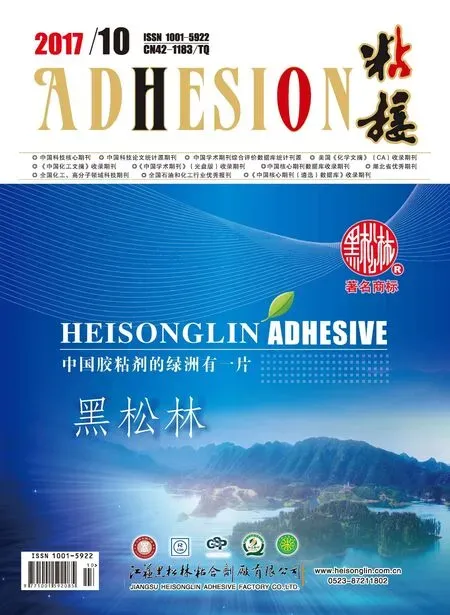热熔压敏胶SDS共聚物热稳定性的氧化动力学研究(Ⅱ)
2017-10-19李满林裴须强张军营
刘 鑫,李满林,裴须强,张军营,程 珏
(1.北京化工大学,碳纤维及功能高分子教育部重点实验室,北京 100029;2.广东泰强化工实业有限公司,广东 清远 511542)
热熔压敏胶SDS共聚物热稳定性的氧化动力学研究(Ⅱ)
刘 鑫1,李满林2,裴须强1,张军营1,程 珏1
(1.北京化工大学,碳纤维及功能高分子教育部重点实验室,北京 100029;2.广东泰强化工实业有限公司,广东 清远 511542)
1 续言
上篇文章推导出了含一系列合理参数的耗氧量动力学方程式,为了检验方程的实用性,本研究设计了用于耗氧量实验的热氧化装置,并且测量了热熔压敏胶(HMPSA)抑制和非抑制体系的耗氧量曲线。
2 HMPSA的模型和实验数据对比
2.1 材料
本研究所用的原料为SBS(YH-792)、SIS(稳定物质D1107)和SEBS(氢化SBS)均由贝壳公司生产,这些物质都包含对全部或部分起稳定作用的抗氧剂。在准备氧化样品之前,采用Pecsok方法[29]将SBS、SIS先在苯溶液中用甲醇的连续沉淀法进行纯化并提取出少量存在的氧化剂。提纯后,将样品在50℃的真空烘箱中干燥,同时在氮气氛围中将SBS和SIS溶解甲苯中并放置于5 ℃冰箱黑暗处保存。购于封开林业化学厂的加工油和增黏剂[萜烯树脂(T-90,软化点为90 ℃)]则直接使用。高纯氮用于氧化过程中防止测量时间之前的氧化。工业级氧气用作加速氧化试验的氧化剂。本研究中使用的抗氧剂是北京化工总公司的商业产品,规格列于表3中。SDS和抗氧剂或者说PSA试样是在室温下的氮气氛围中除去甲苯所制备的。加速试验的薄片是涂于玻璃管内表面上,氮气氛围中真空干燥除去溶剂。
2.2 氧化测试仪器
图3所示的是用于测量SDS和PSA薄膜耗氧量的设备。内表面涂油样品的玻璃管内放置些许KOH固体,用于吸收老化过程中产生的二氧化碳和挥发性酸。氧化过程中样本可能会被深度氧化成会影响精确观察耗氧量的小分子化合物,如CO2或羧酸,所以玻璃管需先用N2和真空泵交替3次充满高纯氮,然后插入预先定好温度的铝浴中保持5 min使之达到恒定温度。通过改变真空泵的阀门和3次短间隔并用氧气取代氮气,然后就可以记录下消耗的氧气量。

图3 耗氧量实验所用的设备图Fig.3 Drawing of equipment used in oxygen uptake test
2.3 数值回归方法与条件
实验数据的回归模拟是在下列条件下进行的:将公差设为1.0×10-9,当2个连续迭代减少的χ2变化值小于1.0×10-9时,可以用来判断迭代的标准值。除非特别声明,δ设为0.05,从相对最小的5×10-30到相对最大的5×1030,没有权重、没有约束参数及回归程序,同时也计算了参数数值的误差、独立性、相关性系数以及减少的χ2相关性系数。

表3 试验中使用的抗氧剂及规格Tab.3 Antioxidants used in tests and their specifications
2.4 实验结果讨论
2.4.1 相关成分和HMPSA的热氧化行为
SBS型的PSA通常由多组分的配方组成,包括SBS或SIS、增黏剂和增塑剂等。由于不同成分的化学结构不同,所以氧化行为差别很大。如图4所示,纯SIS的氧化曲线(纯SIS、180 ℃)和纯SBS(纯SBS、180 ℃)的氧化曲线在180 ℃下具有相似性,而且耗氧量最终都超过160 mL/g,石油和增黏剂的氧化曲线几乎相同,最终耗氧量低于40 mL/g。SEBS(纯SEBS、180 ℃)则表现出非常好的耐热氧化性。对于2.1节中所述的纯SBS试样(纯SBS 160 ℃)和以前的商品(SBSC、160℃)而言,封闭体系的SBS(SBS 160 ℃)有诱导时间,160 ℃下纯的SBS(图4中的纯SBS 160 ℃)没有诱导时间,2者的耗氧量曲线在初始阶段差别较大。20 min后,SBS(SBS 160 ℃)的耗氧量曲线通过大的斜率赶上了纯的SBS(纯SBS 160 ℃)的耗氧量曲线,由此表明,封闭的SBS体系在诱导期过后,其氧化速率比纯的SBS更快,这归因于抗氧剂产品的加速作用。由图4可知:不同HMPSA材料的相对最大耗氧量、时间、相对最大氧化速率和时间依赖性的差别较大,尤其化学结构差异较大的SDS、增黏剂和加工操作油。SDS的可氧化基团含量[A]0比增黏剂、石油或SEBS更多。同一样品在不同温度下的相对最大耗氧量和相对最大氧化速率都是随温度升高而增加的,这说明,测试条件对可氧化基团的含量[A]0有影响。
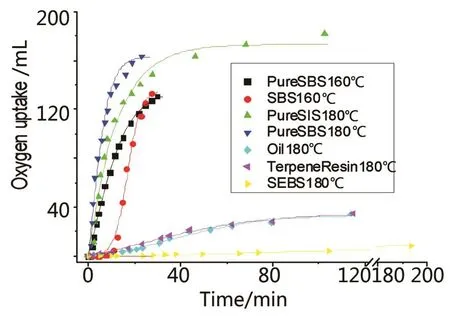
图4 HMPSA各成分(SBS、SIS、萜烯树脂、石油和SEBS)在160 ℃和180 ℃以及氧气存在下的耗氧量曲线Fig.4 Oxygen uptake curves of each component(SBS,SIS,terpene resin,petroleum and SEBS)of HMPSA at 160℃ and 180℃
其中连续线为模拟的曲线,点为实验结果的数据,方程式(29)的拟合参数和相关系数列于表4。
不同位阻酚抗氧剂的SBS型PSA薄片之氧化曲线如图5所示。含抗氧剂330,1076和1010试样的曲线类似,表明有相似的推导时间和相对最大耗氧量,而含抗氧剂264和330试样的相对最大耗氧量则较低。此外,与不含抑制剂的相比,抗氧剂264对氧化的延迟开始影响较小,抗氧剂330对SBS-PSA体系有较强的抑制作用,表示其具有较长的推导时间和较低的相对最大耗氧量。尽管是位阻酚类,对SBS型HMPSA这些抗氧剂都有不同的自氧化行为。

图5 SBS-HMPSA在不同抗氧剂质量分数0.4%、180 ℃氧气氛围中的耗氧量曲线Fig.5 Oxygen uptake curves of SBS-HMPSAs with 0.4 wt%of different antioxidant at 180℃ under oxygen atmosphere
SBS-HMPSA的基本配方为(SBS-792)100 g、萜烯树脂(T-90)110 g、加工油60 g,与质量分数为0.4%的抗氧剂溶于甲苯中配成20%固含量的溶液。其中连续线为模拟的曲线,点为实验结果的数据。方程(29)的拟合参数和相关系数列于表6。
没有抗氧剂的SBS型PSA薄片在不同温度下的氧化曲线如图6所示。诱导时间对测试温度有很强的依赖性,特别是在120~160 ℃内。本研究认为诱导期是抗氧剂的消耗期,然而在没有抗氧剂存在的体系中,诱导期是自由基和过氧化基的积累期。由于氧化速率与体系中残余可氧化基团的数量和已氧化基团的数量有关,相对最大氧化速率是在相对最大耗氧量一半时达到。也就是说,相对最大氧化速率通常发生在可氧化的基团被消耗一半的时候[式(31)]。
基本配方为(SBS-792)100 g、萜烯树脂(T-90)110 g、加工油60 g,与质量分数为0.4%的抗氧剂溶于甲苯中配成20%固含量的溶液。其中连续线为模拟的曲线,点为实验结果的数据。方程式(29)的拟合参数和相关系数列于表8。
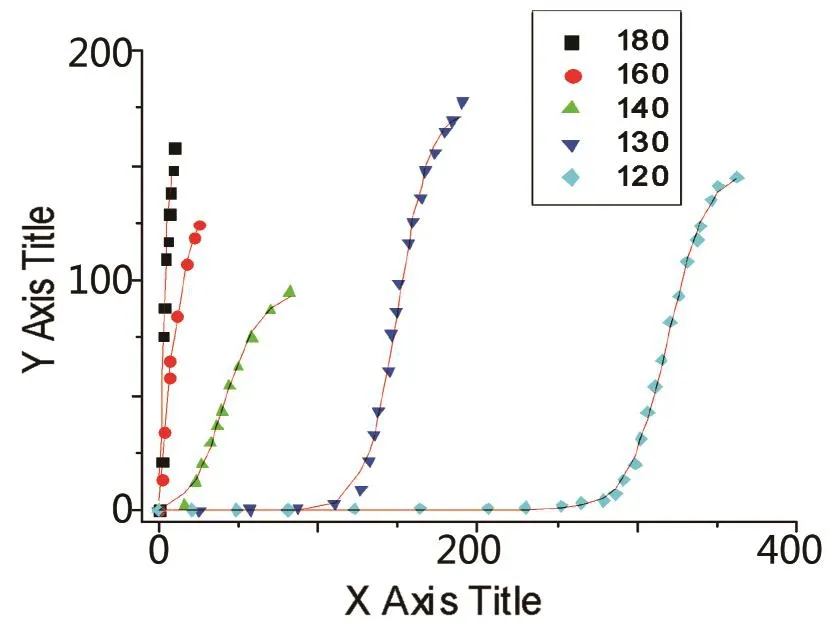
图6 不含抗氧剂的SBS-HMPSA在不同温度下的耗氧量曲线Fig.6 Oxygen uptake curves of SBS-HMPSA without antioxidant at different temperature
2.4.2 数值解析与预测模型
采用2.2节的方法通过式(29)模拟出实验数据,拟合的参数和回归条件列于表4中。各种类型的耗氧量曲线如图4所示,所有这些曲线都与提出的模型相吻合且相关系数超过0.98,如表4所示。
对于在180 ℃下氧化的纯SIS和SBS试样,氧化速率刚开始较快,以至于观察不到诱导期,这说明相对最大氧化时间早于开始记录的时间。这是由于在加热涂有样品的玻璃管到测试温度的过程中,氮气和氧气气氛交换时(如图1所示),试样就已经发生了预氧化,这是在开始测量氧化时间之前。由于纯SBS和SIS对氧化更敏感,这些样品即便是含有的过氧化基团较少,在高温下也很容易达到相对最大氧化速率。对于纯SIS 180 ℃和纯SBS 180 ℃试样参数的回归过程,约束条件是tm≥ 0,而其余试样和参数则不存在约束条件。
根据表4中参数V∞、K和tm构 建的式(29)模型,采用连续的实线绘制出每个试样的预测耗氧量曲线,如图4所示。每个相关参数的属性,如误差和依赖,以及曲线与数据的相符度,得出的R2的系数χ2均列于表5中。由较高相关系数和确定数表明,所有预测的曲线与实验数据具有高度一致性。
非纯化的SBS在160 ℃的拟合参数K大约是0.422 5,这是纯SBS在160 ℃下拟合参数的3倍多。由等式可知:K=A0k2+ nk1,L=eKtm=A0k2/nk1,可得到式(44)~(47)。

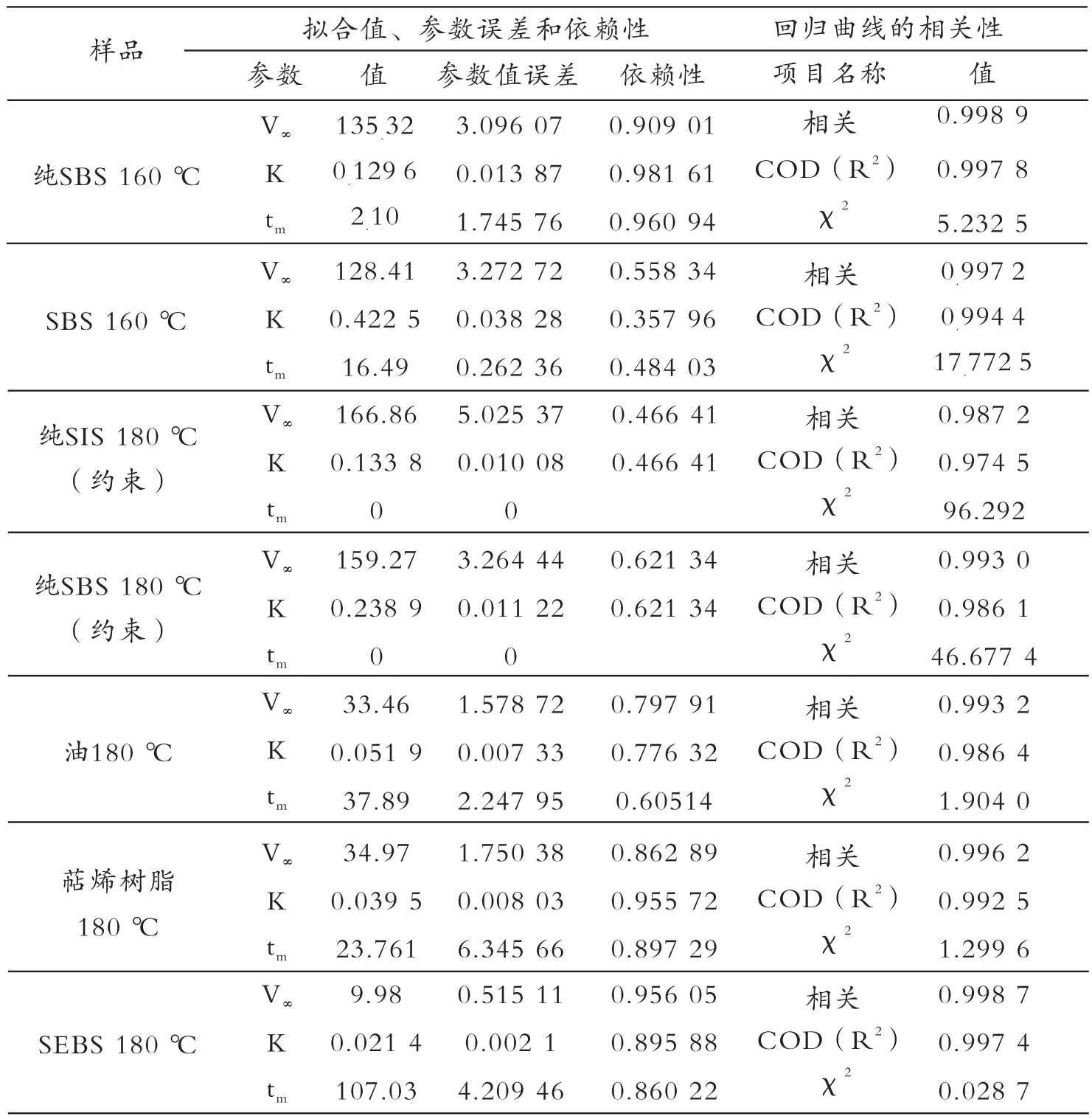
表4 HMPSA的各成分对方程式(29)的拟合参数和相关系数Tab.4 Fitting parameters and correlation coefficients of components of HMPSA for equation(29)
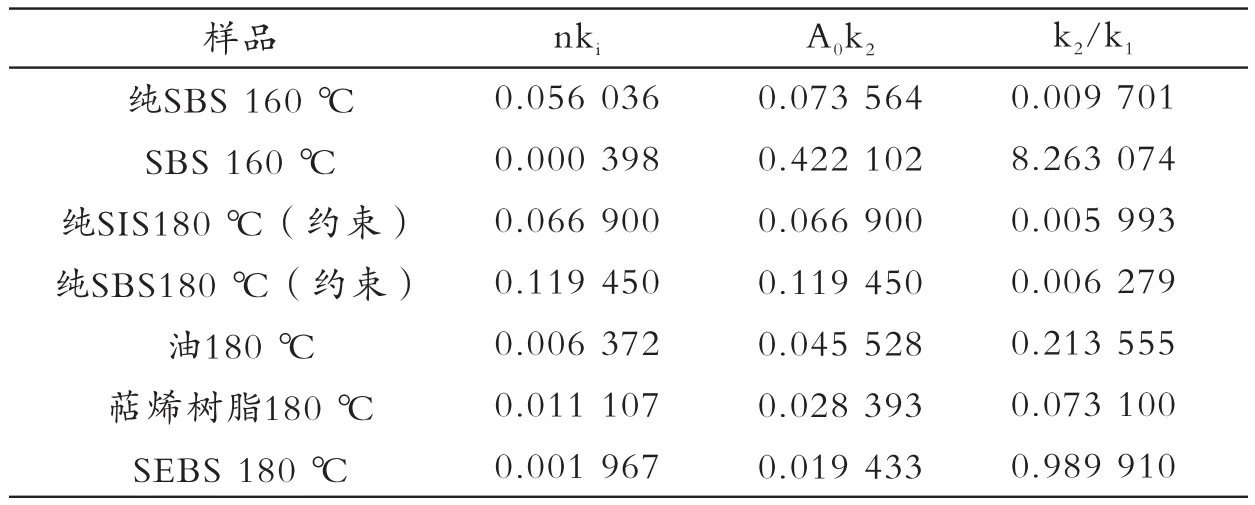
表5 HMPSA各成分的复合参数(nki,A0k2和 k2/ k1)Tab.5 Combined parameters (nki,A0k2 and k2/ k1) of components of HMPSA

如表5所示,由式(46)、(47)和V∞=可计算出A0k2、nki和 k2/ ki。因此,如果知道A0,则可以得到k2、n和ki。比较无抑制剂的SBS(纯SBS 160 ℃)与有抑制剂的SBS(SBS 160 ℃ ) 的nki、 A0k2和 k2/ ki值 可 以 发 现 ,抑 制体系的k2/ ki值 更大,这表明商业化的抑制SBS的起始速率常数较低。这可能是因为抗氧剂参与了最初的氧化,使得表观初始速率常数的数值更低。比较180 ℃下无抑制剂的SBS和SIS体系可知,由于具有较高的nki、A0k2和 k2/ ki值 ,SBS比SIS更容 易 氧 化。
采用上述同样的方法计算图5的参数并列于表6、表7中。表6列出的对比数据和图4中画出的每个试样的预测耗氧量曲线表明,等式与实验数据有较好的一致性,说明同样可用于有抑制剂的HMPSA体系。表5中V∞随抗氧剂种类不同而有变化,这可能是由于抗氧剂耗氧量的差别或者是抗氧剂氧化机制的改变所致。表3中列出的抗氧剂的结构表明,后者为主要原因。
利用同样方法从图6数据中得到的参数列于表8和表9中。如表7所示,预测的曲线与实验数据较接近并有较好的一致性。结果证实,式(29)能用来模拟不同温度下HMPSA体系的耗氧量曲线。tm值随测试温度的降低会大大增加,尤其是在160~120 ℃的低温范围更为明显,这是由于较小的初始反应速率常数之缘故,如表8所示。相比nki值随温度的变化,A0k2值改变的就很小,这说明温度对的值影响较小。
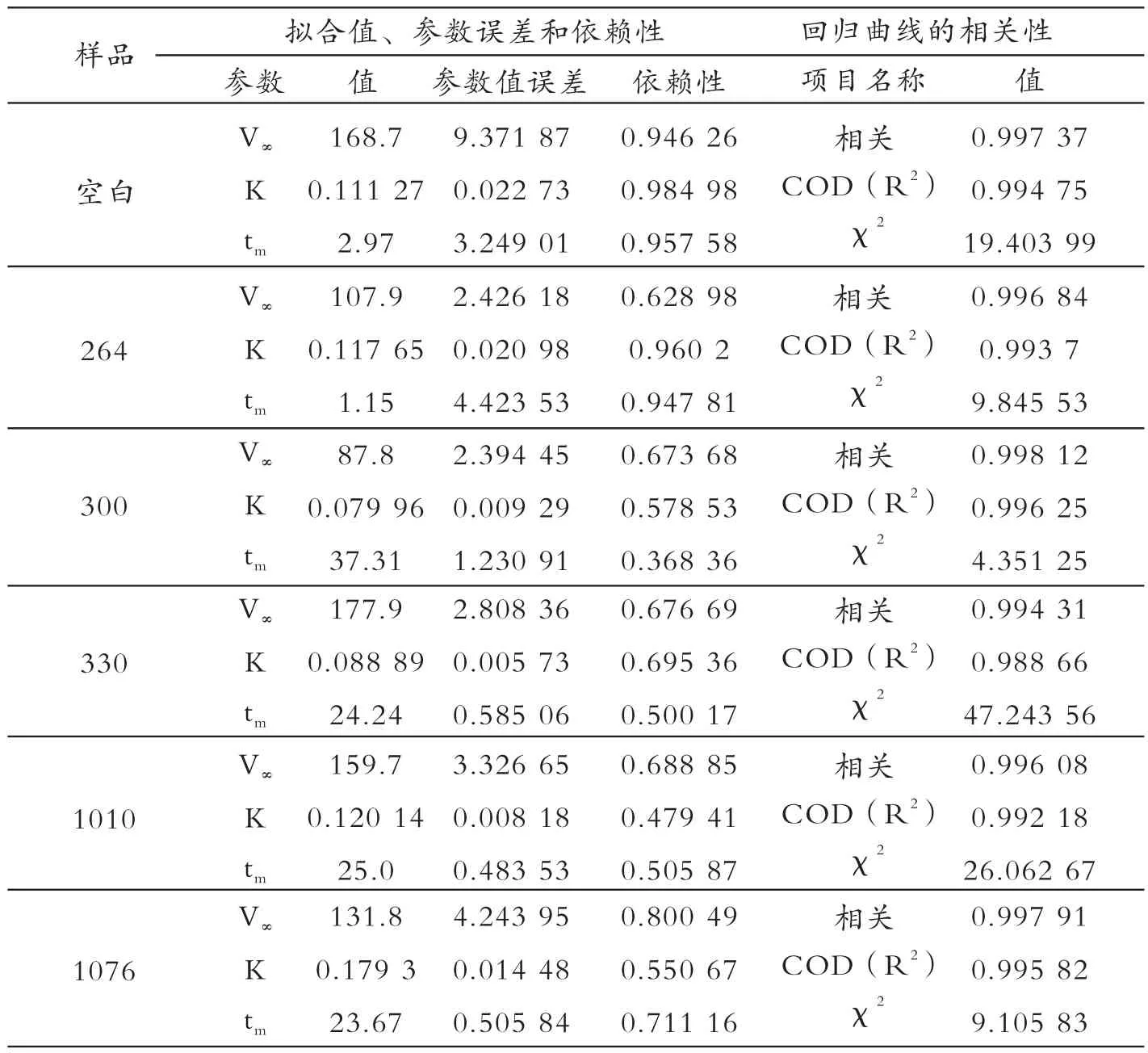
表6 含0.4%不同抗氧剂的PSA对式(29)的拟合参数和相关系数Tab.6 Fitting parameters and correlation coefficients of PSAs with 0.4 wt% of different antioxidant for equation(29)
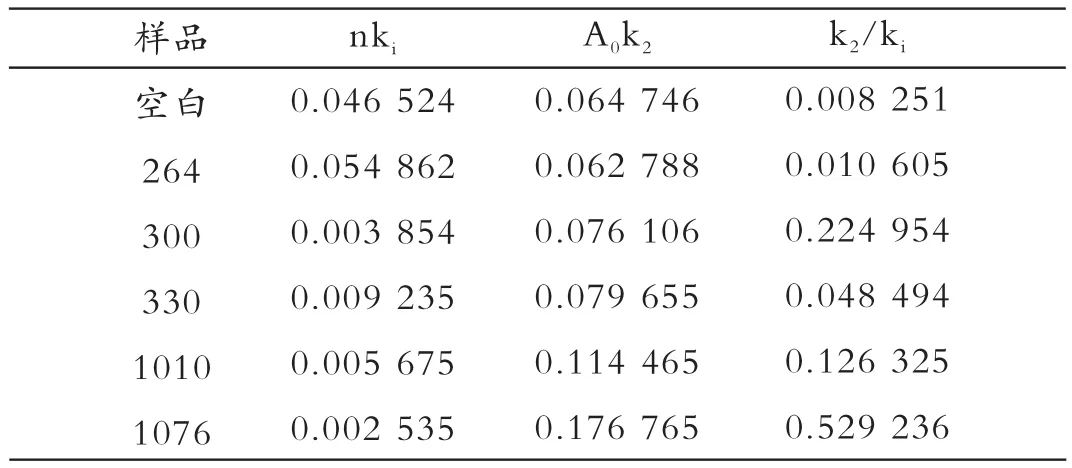
表7 含0.4%不同抗氧剂的PSA的复合参数(nki、 A0k2和 k2/ ki)Tab.7 Combined parameters(nki、 A0k2 and k2/ ki) of PSAs with 0.4 wt% of different antioxidant
3 结论
本研究在前文推导的耗氧量动力学方程式基础上,通过建立数值模拟的方法得到实验数据的参数,所提出的方法已成功地应用于不同成分、含或不含抗氧剂的配方以及不同温度下的HMPSA体系。尽管耗氧量曲线有的有明确的诱导期、有的没有诱导期,但是在参数变化范围内,包括最终的平衡阶段,模拟结果都与实验数据几乎吻合。
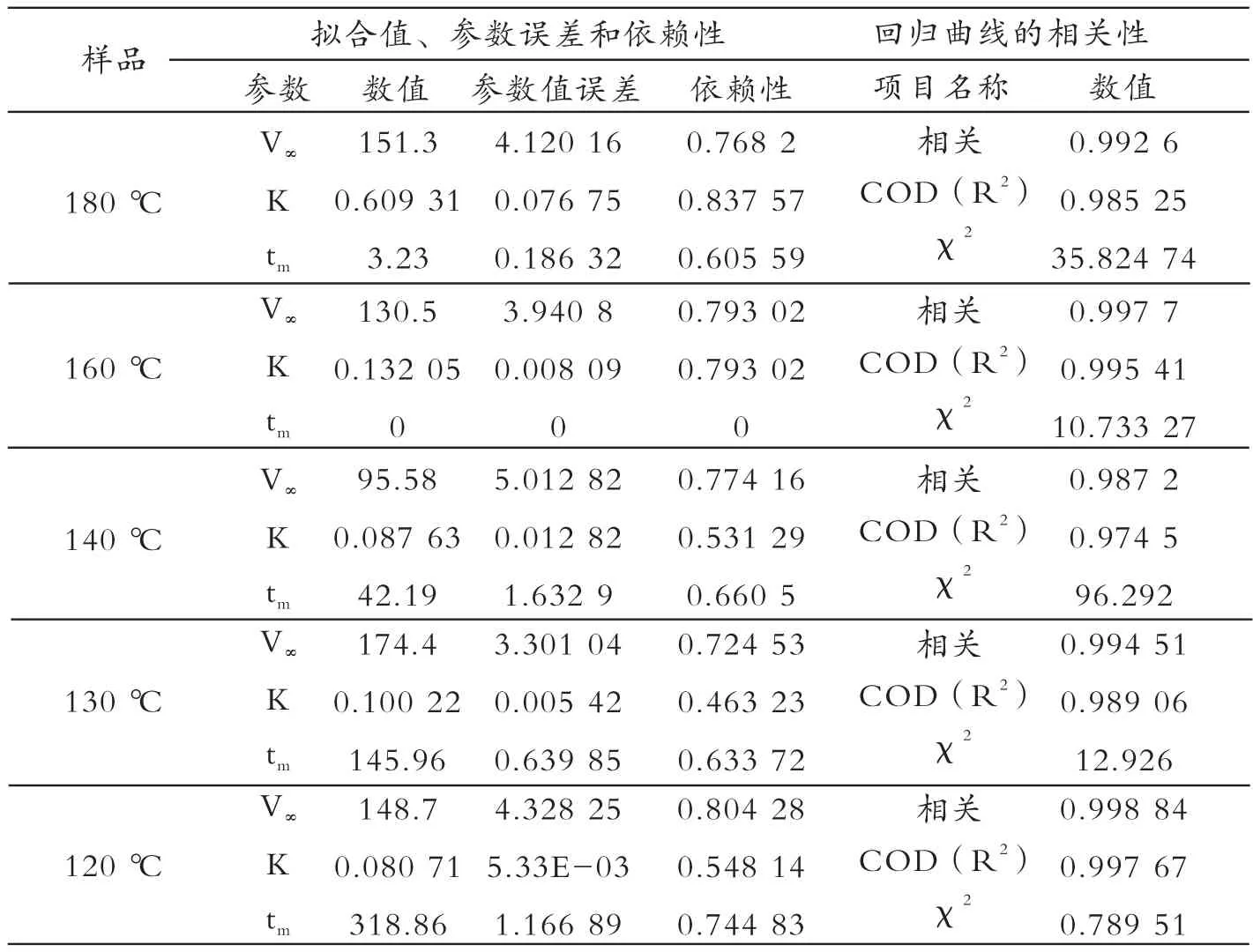
表8 120~180 ℃不同温度下无抗氧剂的PSA对式(29)的拟合参数和相关性Tab.8 Fitting parameters and correlation coefficients of PSA without antioxidant at different temperature from 120 to 180℃

表9 120~180 ℃不同温度下无抗氧剂的PSA的复合参数(nki、 A0k2和 k2/ ki)Tab.9 Combined parameters(nki、 A0k2和 k2/ ki) of PSA without antioxidant at different temperature of 120~180 ℃
[1]Aggarwal S L.Structure and properties of block polymers and multiphase polymer systems:an overview of present status and future potential[J].Polymer,1976,17(11):938-956.
[2]Harlan J T,Petershagan L A.In:Skeist I,editor.Handbook of adhesives,2nd ed[M].New York:Van Nostrdnd-Reinhold,1977,chapter 19.
[3]Kubo J,Onzuka H,Akiba M.Inhibition of degradation in styrene-based thermoplastic elastomers by hydrogen-donating hydrocarbons[J].Polymer Degradation&Stability,1994,45(1):27-37.
[4]Wang S M,Chang J R,Tsiang R C.Infrared studies of thermal oxidative degradation of polystyreneblock-polybutadiene-block-polystyrene thermoplastic elastomers[J].Polymer Degradation&Stability,1996,52(1):51-57.
[5]Allen N S,Barcelona A,Edge M,et al.Aspects of the thermal and photostabilisation of highstyreneebutadiene copolymer(SBC)[J].Polymer Degradation&Stability,2006,91(6):1395-1416.
[6]Susmita B,Anil K B,Avasthi B N.Degradation of hydrogenated nitrile rubber[J].Polymer Degradation&Stability,1991;31(1):71-87.
[7]Gugumus F.Aspects of the stabilization mechanisms of phenolic antioxidants in polyolefins[J].Angewandte Makromolekulare Chemie,1985,137(1):189-225.
[8]Chang D M.Methods for study of thermal aging and stabilization of grafted acrylonitrilee butadiene styrene(A B S)terpolymers[J].Polymer Engineering&Science,1982,22(6):376-381.
[9]Emanue N M.Thermo-oxidative ageing of polymers[J].Polymer Science U.s.s.r,1985,27(7):1505-1525.
[10]Kuz'minskii A S.Some urgent problems in the ageing and stabilization of elastomersreview[J].Polymer Science U.s.s.r,1977,19(10):2509-2523.
[11]Emanue N M.Some problems of chemical physics of ageing and stabilization of polymers[J].Polymer Science U.s.s.r,1979,21(11):2900-2930.
[12]Va'vra J.Physics and chemistry of aging e early developments[J].Nuclear Instruments& Methods in Physics Research,2003;515(1-2):1-14.
[13]Traian Z,Maria G,Ion M.Effects of some a n t i o x i d a n t s o n t h e s t a b i l i t y o f ethyleneepropylene elastomers[J]. Polymer Degradation&Stability,1995,48(1):151-154.[14]Belyakov V A,Lauterbach G,Pritzkow W,et al.Kinetics and regioselectivity of the autoxidation of alkylaromatic hydrocarbons[J].Advanced Synthesis&Catalysis,1992,334(5):373-382.
[15]Daniel J H,Julian F J,Yates W R.Aging of pressure-sensitive adhesives I:stability of styreneeisopreneestyrene block copolymer films at 95℃[J].Polymer Engineering&Science,1982,22(11):865-869.
[16]Daniel J H,Yates W R,Julian F J.Aging of pressure-sensitive adhesives III:studies of surface oxidation with multidetector size exclusion chromatography[J].Journal of Applied Polymer Science,1986,31(5):1393-1401.
[17]Reich L,Jadrnicek B R,Stivala S S.Kinetics of thermal oxidation of polyolefins e a review[J].Polymer Engineering&Science,1971,11(11):265-273.
[18]Dinoiua V,Gorghiub L M,Jipab S,et al.Kinetic study on thermal degradation of lowdensitypolyethylene stabilized with chalcone derivatives[J].Polymer Degradation&Stability,2004,85(1):615-622.
[1 9]G u g u m u s F.C r i t i c a l a n t i o x i d a n t conc e n t r a t i o n s in p o l y m e r o x i d a t i o n-I.Fundamental aspects[J].Polymer Degradation&Stability,1998,60(1):85-97.
[2 0]G u g u m u s F.C r i t i c a l a n t i o x i d a n t concentrati o n s i n p o l y m e r oxidation-II.Experimental “proofs”[J].Polymer Degradation&Stability,1998;60(1):99-117.
[2 1]G u g u m u s F.C r i t i c a l a n t i o x i d a n t concentrations in polymer oxidation-III.Application to lifetime prediction[J].Polymer Degradation&Stability,1998,60(1):119-135.
[22]Zabarnick S.Pseudo-detailed chemical kinetic modeling of antioxidant chemistry for jet fuel applications[J].Energy&Fuels,1998,12(3):547-553.
[23]Kuprowicza N J,Ervinb J S,Zabarnickb S.Modeling the liquid-phase oxidation of hydrocarbons over a range of temperatures and dissolved oxygen concentrations with pseudo-detailed chemical kinetics[J].Fuel,2004,83(13):1795-1801.
[24]Bhattacharya A.Kinetic modeling of liquid phase autoxidation of cumene[J].Chemical Engineering Journal,2007,137(2):308-319.
[25]Colin X,Audouin L,Verdu J.Kinetic modeling of the thermal oxidation of polyisoprene elastomers.Part 1:unvulcanized unstabilized polyisoprene[J].Polymer Degradation&Stability,2007,92(5):886-897.
[26]Colin X,Audouin L,Verdu J,et al.Kinetic modeling of the thermal oxidation of polyisoprene elastomers.Part 2-Effect of sulfur vulcanization on mass changes and thickness distribution of oxidation products during thermal oxidation[J].Polymer Degradation&Stability,2007,92(5):898-905.
[27]Benson S W.Kinetics of pyrolysis of alkyl hydroperoxides and their O-O bond dissociation energies[J].Journal of Chemical Physics,1964,40(4):1007-1013.
[28]Hiatt R,Irwin K C.Homolytic decompositions of hydroperoxides.V.Thermal decompositions[J].Journal of Organic Chemistry,1968,33(4):1436-1441.
[29]Pecsok R L,Shelton JR,Koenig JL.Fourier transform infrared studies of inhibited autoxidation in cis-1,4-polybutadiene[J].Polymer Degradation&Stability,1981,3(3):161-176.
Abstract:As the poor aging property of the SDS (styrene-diene-styrene triblock elastomer) copolymer hot-melt pressure-adhesives (HMPSAs), it was very important to study the aging and anti-aging property of the SDS triblock copolymer, such as SBS and SIS. The mechanistic scheme based on the standard scheme for radical chain oxidation, but taking into account the decomposition of peroxide resulted in the oxidation, was built. The kinetic equation of oxygen uptake was deduced from the proposed mechanism, which is composed of a set of physically reasonable parameter. The relationships between the parameters and the induction time, maximum oxygen uptake and maximum oxidation rate were discussed. The numerical simulation methods were established in order to get the parameters from the experiment data, by which the most kinetics equations of oxygen uptake of the ingredients of hot-melt pressure-sensitive adhesives were numerically fitted and the relativity from the model to the data were discussed. The results were to be benefit to study the anti-aging performance of the other materials.
Key words:thermal stability; oxidation; simulation; SBS; SIS; HMPSAs
Study on oxidation kinetics of thermal stability of SDS copolymer for hot-melt pressuresensitive(Ⅱ)
LIU Xin1, LI Man-lin2, PEI Xu-qiang1, ZHANG Jun-ying1, CHENG Jue1
(1.Key Laboratory of Carbon Fiber and Functional Polymer, Beijing University of Chemical Technology, Beijing 100029,China; 2. Guangdong Taiqiang Chemicals Co., Ltd., Qingyuan, Guangdong 511542, China)
TQ436+.4
A
1001-5922(2017)10-0048-08
2017-03-29
刘鑫(1988-),女,博士。主要从事高性能聚氨酯材料的研究与应用开发。E-mail:124278008@qq.com。
